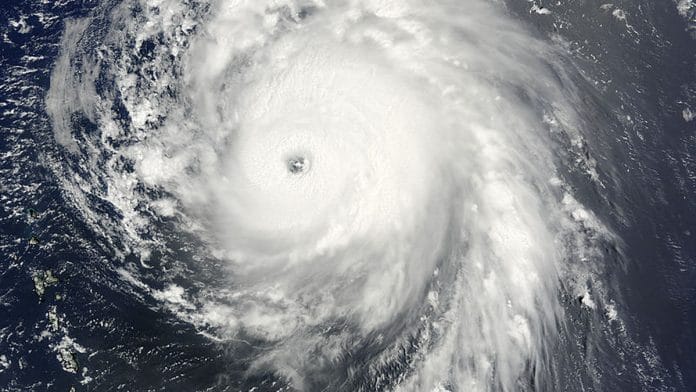Stormquakes may help scientists find out what lies underground
Scientists have discovered a new earthquake-like phenomenon called stormquakes. These are caused when powerful storms create ocean waves that are strong enough to pound the sea floor and cause vibrations, which can be recorded on seismometers. Studying these seismic waves may help scientists map what lies underground. More on VICE.
Meteorite that killed dinosaurs caused ocean acidification
Researchers studying fossils from 66 million years ago have found how a meteorite’s impact, that had wiped out dinosaurs, also led to a collapse of marine species. The meteorite had increased carbon levels in the atmosphere, altering the chemistry of oceans and eventually leading to mass extinction of marine life. This event is called the Cretaceous-Palaeogene (K-Pg) mass extinction. Scientists have now predicted that this is where living beings are heading again. More on Scientific American.
Canadian geoscientists launch ambitious geophysical project
Canadian researchers are leading an ambitious project to establish a fleet of geophysical observatories across the nation. The project’s aim is to study Canada’s “geologically active western mountains”, its ancient rocks and unstable regions in the east. It is as yet unclear whether all observatories will get funding, but this project is nevertheless garnering attention and support from across the world. More on Nature.
Loudest bird call ever recorded in Brazil
Ecologists have announced that the mating call of the white bellbird, found in Brazil, is officially the loudest birdsong ever recorded. It averages 1,254 decibels, is louder than rock concerts and sound of chainsaws, and is much higher than the 85 decibel level that is considered safe for human ears. More on NYT.
US shuts down monitoring programme tracking new diseases
The US government quietly stopped funding for a project — Predict — through which researchers were tracking animal viruses and monitoring new diseases that could one day potentially spread to humans. Launched after the H5N1 bird flu scare, the programme tracks viruses that emerge from unusual places such as camel barns and gorilla carcasses. The move has public health officials worried. More on NYT.






